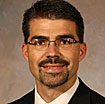Commentary on Psalm 126
The theme of restoration that appeared in Psalms 80 and 85 during the first two weeks of Advent continues with Psalm 126.
In this psalm, however, the notion of reversal occupies a central place, inviting the reader to recognize that restoration by God does more than simply restore what was lost. The kind of divine restoration envisioned in this psalm means much more than compensation.
Instead, such restoration suggests a radical reversal of reality, both past and yet to come. And strikingly, scenes of celebration and joy accompany each reversal of reality. Attention to these movements in the text may prove fruitful in the journey through Advent.
The opening verse recalls what might have been considered the most significant reversal of reality in the mind of the community. The psalmist remembers the time “when the Lord restored the fortunes of Zion.” As in Psalm 85, the psalmist uses the phrase “restore the fortunes” to refer to the return from exile. Following the announcement of this great reversal, the psalmist recalls the effects it had upon the faithful:
“We were like those who dream.
Then our mouth was filled with laughter,
And our tongue with shouts of joy.”
The mourning and grief that suppressed the singing of the songs of Zion while in a foreign land (cf. Psalm 137) has been radically reversed. Mourning has given way to laughter and joy. And like Joel 3, at the coming of God, the people will see a new day where all people will become dreamers.
The second reversal relates to the nations. In other psalms, the nations frequently mock and ridicule the people of God. For example, in Psalm 79, following the destruction of Jerusalem, the nations mockingly inquire, “Where is their God?” The implication, of course, is that the God of Israel is impotent at best and utterly disinterested at worst. Such challenges by the nations are meant to suggest the apparent powerless of this God.
Yet with the work of God comes a radical reversal. The psalmist suggests that the mouths that once ridiculed them at the beginning of the exile were the same mouths now uttering praise to Israel’s God. The same nations that believed God was impotent are the ones that confessed that “the Lord has done great things” for Israel.
This confession of the nations (verse 2a) became the confession of Israel as they too recognized the great work of God. Not only did the community recognize this great work, as did the nations, they also celebrated the truth about this God who intervenes and works on their behalf. Such knowledge leads the people to great rejoicing (verse 3b).
Similar to Psalm 85, the psalmist shifts from recounting the past and instead longs for a similar work of God in the world. While the precise historical circumstance of the psalmist cannot be known, most scholars suggest a post-exilic setting for the psalm. The joy and laughter that followed their return home from Babylon was now in the past. The community is left hoping that once again the Lord will do a “great thing for us.”
Drawing from the language of verse 1, the psalmist pleads in verse 4 for God “to restore our fortunes.” Rather than explaining what that coming restoration would look like, the psalmist opts for a simile. God’s work to restore his people is compared to a dry wadi in the Negeb. For months on end, the wadi remains a wasteland where survival of any living thing remains in doubt.
But in a moment, as the sky opens up and the torrents of rain begin, the wadi turns from a life depriving site to a life sustaining source. That is what restoration looks like. That is what the community longs for — to know the great works of God and to relish in the full, life-giving power that will come with this reversal.
The final two verses in the psalm employ agricultural imagery, particularly that of sowing and reaping. Some have suggested that this imagery may have been adapted from agricultural rituals in the Ancient Near East related to the dying and rising of the gods. Given the largely agrarian nature of that society we should not be surprised that the metaphors employed are frequently agricultural. But the use of such imagery does not require a one to one correspondence to a presumed ancient ritual.
I would suggest that the psalmist adopted such imagery in an effort to reinforce the notion of restoration and reversal found throughout the psalm, but even further, such imagery introduces the idea that restoration may not be instantaneous. Those who sow, do so without guarantee, but in anticipation of what will come. The psalmist prays that what began in tears and weeping will end with shouts of joy and arms filled with proof of God’s great work in their midst.
Psalm 126 reminds us that “the Lord has done great things for us.” Even further, like the dreamers of old, we are called to live expectantly, fully convinced that the tears and weeping of our day will not have the last word. The God we serve is the God of restoration and reversal.
For many in this Advent season, restoration must be more than compensation. They are longing for reversal. They are waiting with expectation for tears to be changed into shouts of joy — and Advent reminds us that our waiting is not in vain.

December 11, 2011